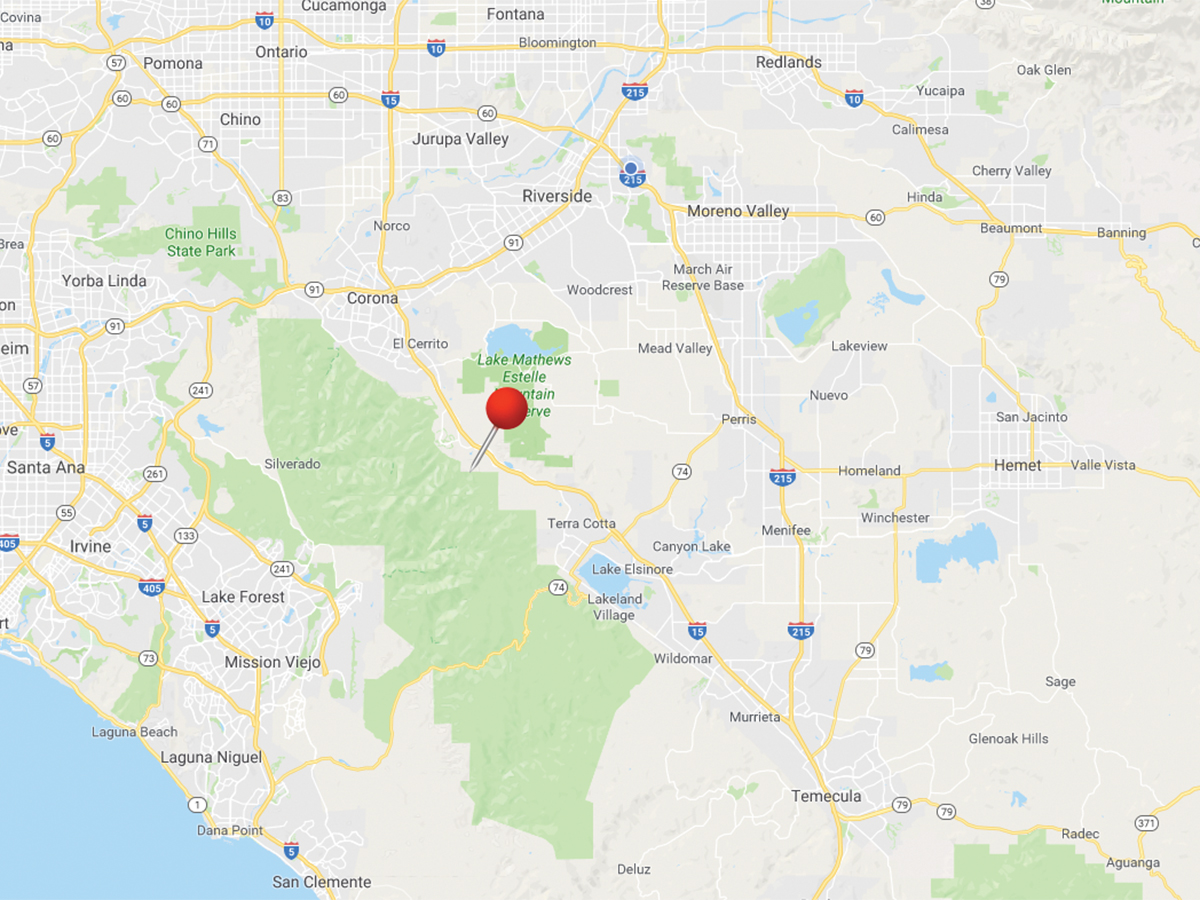
Just after 2 a.m. on Thursday, Jan. 25, a 4.0-magnitude earthquake struck and was centered west of the 15 Freeway between Lake Elsinore and Corona.
According to the U.S. Geological Survey, the earthquake had a depth of about six miles and occurred on the Elsinore Fault Zone. The Elsinore Fault is approximately 112 miles long with a slip-rate (the rate at how fast the two sides of a fault are slipping relative to one another) of 4.0 millimeters per year.
In an interview with the Highlander, Abhijit Ghosh, an assistant professor in the geosciences department at UCR and an earthquake seismologist, stated, “This earthquake essentially failed. It did not really cause any significant damage. This earthquake, however, does remind us that the Elsinore fault exists.” Ghosh’s research goal is to better understand the physics of earthquakes, the processes that control them and their associated hazards by examining a wide spectrum of fault slip across a broad range of spatial and temporal scales. Ghosh uses seismograms, ground vibrations created by earthquakes and recorded by seismometers, as his main tool.
Ghosh believes that California residents tend to forget that the Elsinore Fault exists because those living in California have a tendency to prioritize bigger and more infamous faults in California such as the San Andreas Fault. The Elsinore Fault is much less active than other California faults; Ghosh noted that the slip-rate of the Elsinore fault is very slow compared to other California faults.
Ghosh claimed that despite the fact that the Elsinore Fault is not regarded as a threatening fault, in 1910, the Elsinore fault generated a 6.0-magnitude earthquake. If an earthquake of that magnitude were to occur on the Elsinore fault today, it would cause significant damage to areas such as Riverside and Los Angeles, according to Ghosh.
“I think it is dangerous that we do not pay too much attention to the Elsinore Fault,” said Ghosh. “The San Andreas Fault is definitely the greatest threat to California, undoubtedly; however, faults like the Elsinore Fault can still cause great damage. I definitely think people should pay more attention to it.”
Since the magnitude of the earthquake that occurred on Jan. 25 was a 4.0, the damage in California was virtually nonexistent. However, Ghosh claimed that if the earthquake was of a higher magnitude, cities such as Riverside would suffer great damage. A larger earthquake along the Elsinore Fault Line could cause fires, destruction of landscapes and gas pipe explosions.
Ghosh noted that it would be difficult to pinpoint an exact number in regard to how much financial damage cities such as Riverside would face. Ghosh stated that many factors would play a part in how significant the financial damage would be, such as the direction in which the earthquake occurs. Ghosh stated, “There are too many variables to consider but there is no doubt that the financial impact would be very significant.”
“Whether it is the Elsinore Fault or the San Andreas fault, there will be earthquakes in California,” noted Ghosh. “Some will be damaging, and we cannot stop them. What we can do, however, is we can be prepared. During earthquakes everyone should know to drop, cover and hold. It is important to educate those who may not know this. It is also important to have an earthquake kit. That’s really all we can do. We have to be prepared.”








